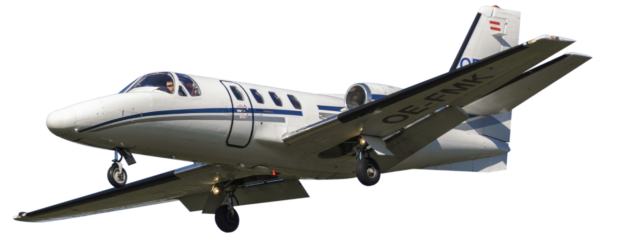HOME | ABOUT US | MEDIA KIT | CONTACT US | INQUIRE
HOME | ABOUT US | MEDIA KIT | CONTACT US | INQUIRE
The rich history created by aviation pioneers a century ago has become the foundation of a powerful manufacturing sector in the Sunflower State.

The names are legendary, iconic, historical, and contemporary, and they are all part of a proud legacy Kansas boasts in commercial aviation and aerospace research and development: Boeing, Cessna, Beechcraft, and Learjet, and later, Bombardier and Raytheon.
Missing from that roster: Longren. Before Wichita would stake its claim as the Air Capital of the World, building more than half the light planes on the planet, an enterprising soul named Albin Kasper Longren mounted an internal-combustion engine to a mass of canvas and wood to produce the first successful plane made in the state: The Longren Flyer. That was just seven years after the Wright Brothers made history at Kitty Hawk.
Longren never made it big as a plane maker, but he went on to help design and manufacture aircraft, with some of his advances still shaping the industry today. His work helped pave the way for young aviation pioneers like Walter Beech, Clyde Cessna, and Lloyd Stearman, who would go on to set up shop in Wichita. There, they pushed the boundaries of design and functionality even further in the 1920s by producing single-wing monoplane and biplane designs, then began to transition to metal frames and planes with multiple engines.
A century later, their legacy has translated into an industry that employs more than 42,000 Kansans in manufacturing and supporting roles, with a combined annual payroll of more than $2 billion, according to an economic-impact assessment conducted by Burns & McDonnell. Since 1919, an estimated 70 percent of the world’s embedded aircraft have been produced in Wichita. Of the state’s roughly $12 billion in annual exports, aviation products account for $2.3 billion, and that manufacturing sector throws off nearly $9.5 billion in overall economic impact.
Reaching Critical Mass
In 1925, Stearman, Cessna, and Beech collaborated to form Travel Air Manufacturing, just 15 years after Albin Longren’s first flight. That set the stage for spectacular advances in aviation design. By the time another 15 years had passed, with the United States on the threshold of entering a world war, Kansas had become the aerial arsenal of democracy.
Assembly lines in the state’s two largest cities, manned by tens of thousands of workers—many of whom weren’t men at all—turned out the majority of the bombers that attacked Axis targets during World War II. The plant in Kansas City’s Fairfax district turned out two-thirds of the 10,000 B-25 Mitchell bombers produced during the war and half of the long-range B-29s that pounded Japan into submission in 1945.
The city then witnessed the production of atomic-age aircraft with Boeing’s B-52 strategic bomber, which has been in service for a remarkable 70 years. Boeing also became the backbone of Wichita’s post-war civilian industrial might, and its descendants remain preeminent today. Spirit AeroSystems, calved off from Boeing in 2006, continues to be the primary builder of the popular 737-series commercial jetliner. More than 11,000 of those have been delivered worldwide since it was introduced by Boeing in 1965, and the backlog for future deliveries is roughly 5,000.
Light planes, meanwhile, evolved in tandem with commercial craft production. At their peak, Beech, Cessna, and Learjet employed more than 10,000 other workers in Wichita, and estimates suggest that for each of those jobs, another was generated in the supplier/vendor space for those companies.
Though Wichita saw an iconic brand disappear last year when Bombardier discontinued the Learjet series, the city retained project work with the company’s military work, and was named as its North American headquarters, as well.
The Knock-On Effect
The thousands of assembly workers in Wichita are just the start of the modern aerospace workforce in Kansas. According to the Greater Wichita partnership, an economic development advocate for the city, plane makers have spawned a network of more than 450 precision machine shops, tool and die shops, and other subcontracting manufacturers within a 200-mile radius of the city, extending to the Kansas City-Topeka corridor.
Within their ranks are 18 Boeing-certified gold and silver suppliers, and overall, that network feeds an aviation and manufacturing supply chain that extends around the world. Essential to that effort are the armies of engineers and engineering technicians. Their numbers make Wichita itself the third-largest engineering hub in the nation, according to Engineering Daily. Even the European giant Airbus, Boeing’s most significant global competitor, has recognized the value of a Wichita presence, siting its Airbus Americas Engineering Center there.
And to feed that stream of engineering talent, regional universities step up with mission-focused academic programming and research efforts. Wichita State University, in fact, is also home to the National Institute for Aviation Research. NAIR specializes in research and development, particularly with testing and certification for airframe technologies. It’s a measure of NAIR’s significance that its executive director is the highest-paid employee on the state payroll, well ahead of the presidents at any of the seven Regents universities.
Both WSU and the University of Kansas offer degrees in aerospace engineering, and Kansas State University, with a separate campus in Salina dedicated to aerospace and technology, also offers degree programs in aviation management and aviation mechanics.